Today I would like to talk about one authentic, picturesque medieval place in Provence - Saint Paul de Vence, which is famous for being a source of inspiration for creative Bohemia at the beginning of the 20th century: artists, writers, and performers. I am attracted by the flight of the creative soul, picturesque places and endless open spaces. It was not surprising that the views of this particular town, or village, or settlement, mysteriously attracted Parisian artists such as Picasso, Renoir, Matisse, Chagall and many others in their time.
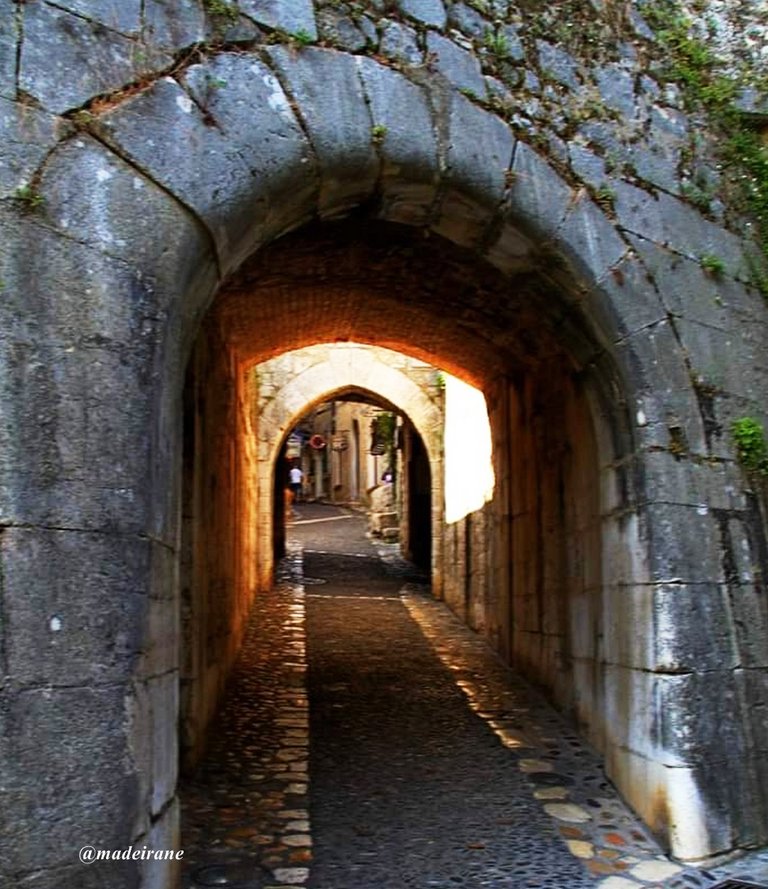
Many towns are located high in the mountains or on hilltops, but if you have a spirit of adventure and a thirst for new discoveries, then mountain trails are not a hindrance for you. This is who we are, so we boldly set out on our journey...
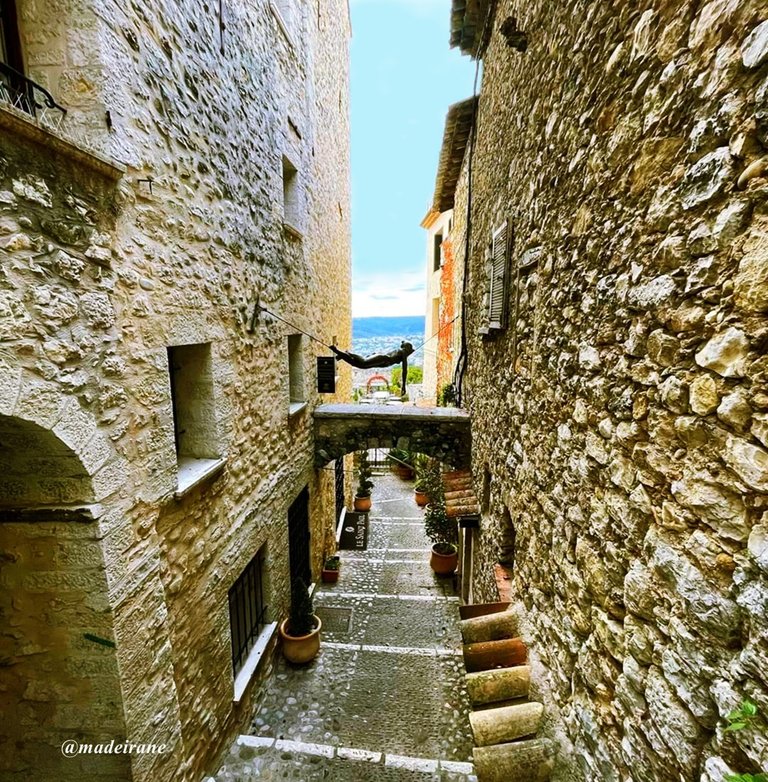
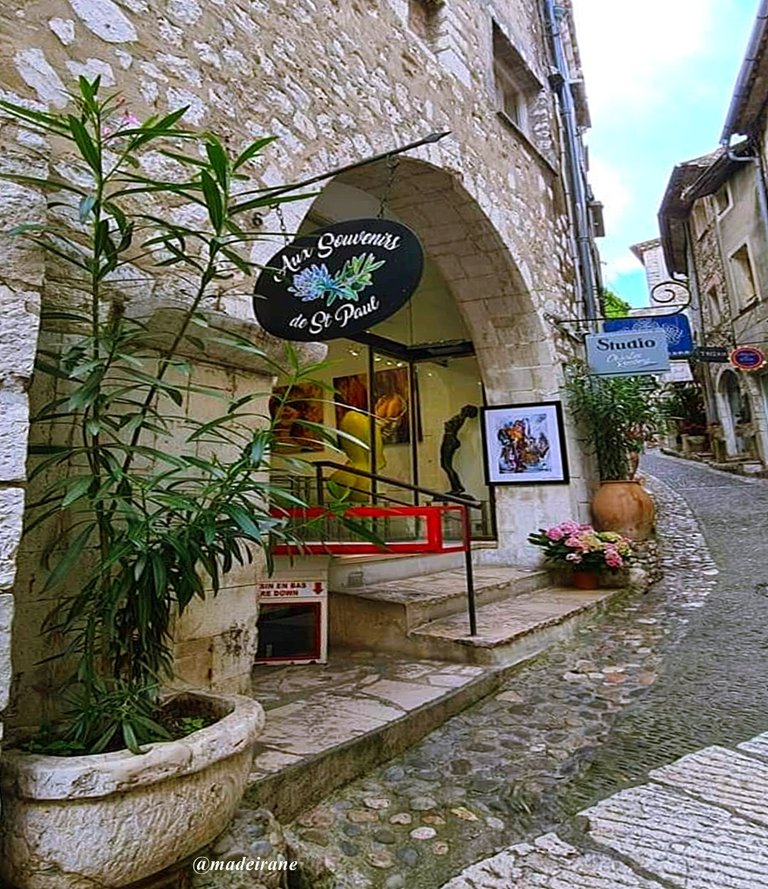
So, let’s refresh our memory a little about the events of bygone days... As we know, Europe was not always Christian, but having defeated the pagans, a new attack came, namely the Saracens, Muslim nomads. They, who came from the Syrian or Arabian desert, were robbers and villains... Residents of the coastal regions of the Mediterranean, quite tired of the constant bloody raids, made the right decision at that time. People began to go far, far away, into the mountains. And there, high, high in the mountains, around the 7th century, they rebuilt fortified cities, which received an interesting name in my opinion - “stone nests”, a good idea in principle. This is how the fortress of St. Paul was revived. Stone dwellings were built in proximity to the old castle and the church of the same name.
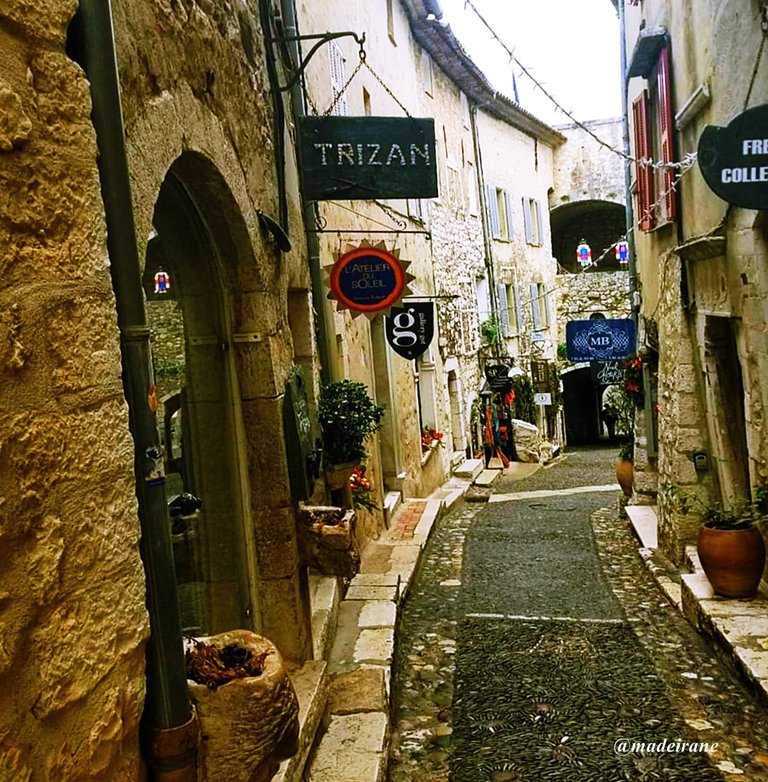
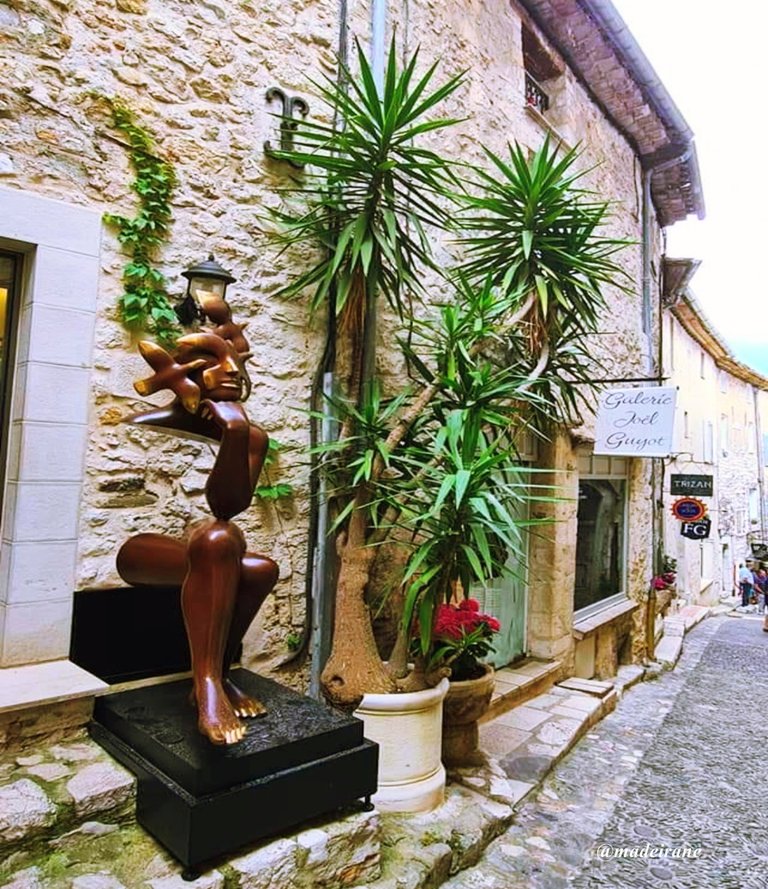
In the 16th century, the city of Saint Paul de Vence, which was of great strategic importance, was surrounded by a thick fortress wall, which is still perfectly preserved and is included in the World Heritage List. In 1860, Nice and all the surrounding towns finally became part of France.
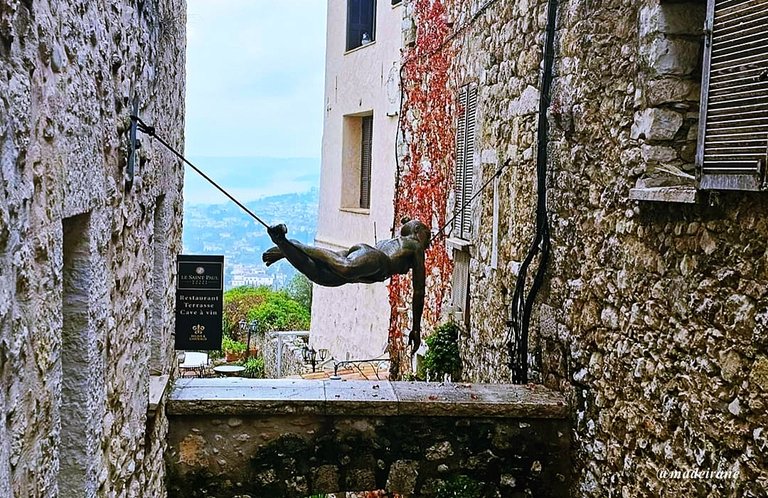
As I already said, this is a city of romantic and creative people. It was here that talented young and not only artists, and later writers, poets, and actors, came here in search of a muse and inspiration at the very beginning of the 20th century.
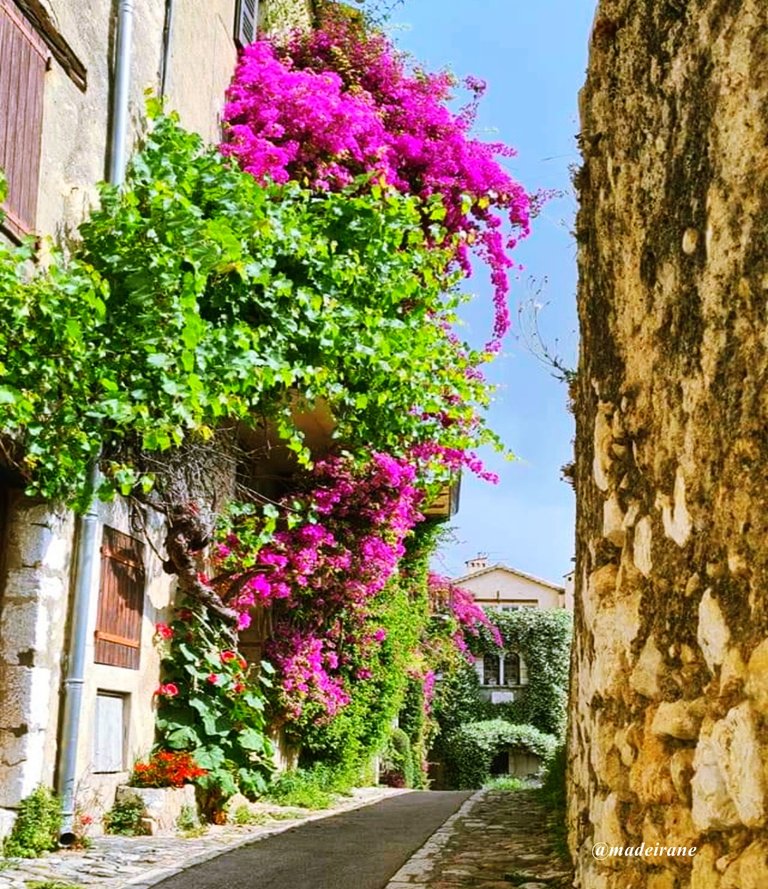
They created for us an open-air city-museum, where the works of artists conquer people’s souls and make hearts beat faster. You are all familiar with these unique names: Pablo Picasso, Amedeo Mondigliani, Marc Chagall, Raoul Dufy, Pierre Bonnard and many others. It was they, tired of crowded Paris, in search of freedom and true reality, new combinations of colors and contrasts, who came to this small town on a hill, far from the bustle of the capital, came and created, created... Often, as payment for overnight stay and food, they left their works - paintings. Thus, the village-town of Saint Paul de Vence became a center of art and culture.
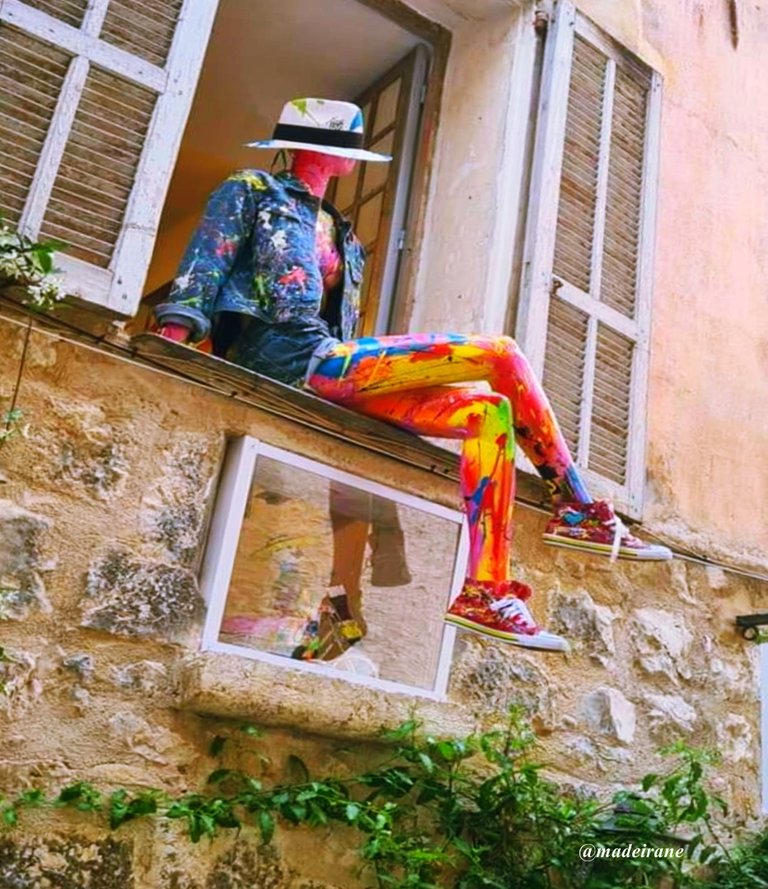
And now we’ll just take a walk along the ancient pedestrian streets of Saint Paul de Vence, there are very few of them, no more than five.
All the houses built in the town are attractions, monuments of history and culture; they belong to the 16th-18th centuries. Mostly, souvenir shops, salons, galleries and creative workshops are located in them.
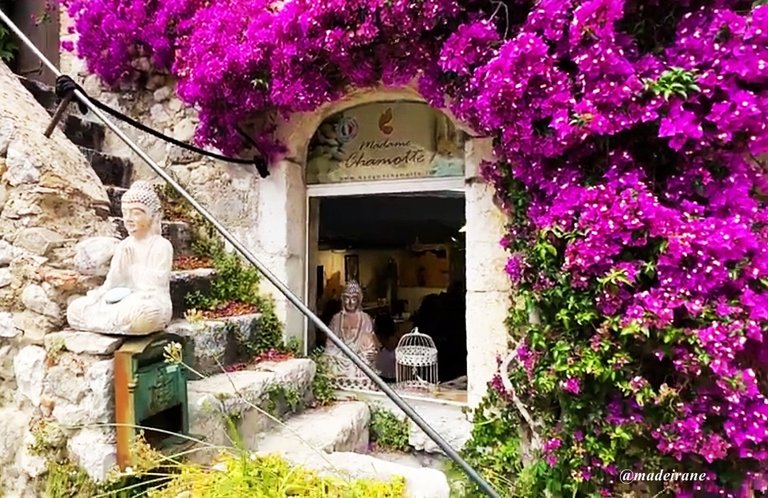
Along the pebble paths, which, like no other, preserve the memory of past historical events, we head to the very “heart” of the town. On our way there are well-preserved medieval houses, courtyards and small squares. Time seemed to stand still...
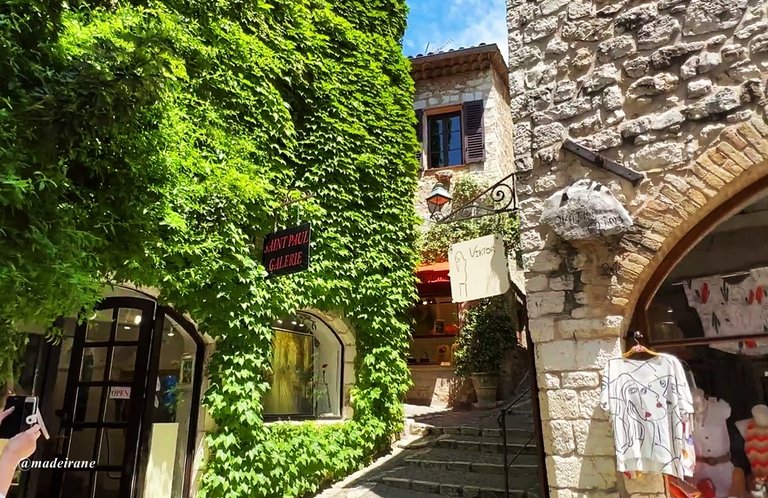
And here are the views of the surrounding area and Mediterranean landscapes that are so beloved by the masters and still inspiring to this day. A stone city surrounded by hills, olive groves, blooming greenery... What pristine beauty! Why am I not an artist?

From the observation deck you can also see the local cemetery. The world-famous Marc Chagall, an artist awarded the highest award - the Order of the Legion of Honor of France, is buried there. He created according to the principle of “colors, purity, love” and spent the last years of his life in Saint-Paul.
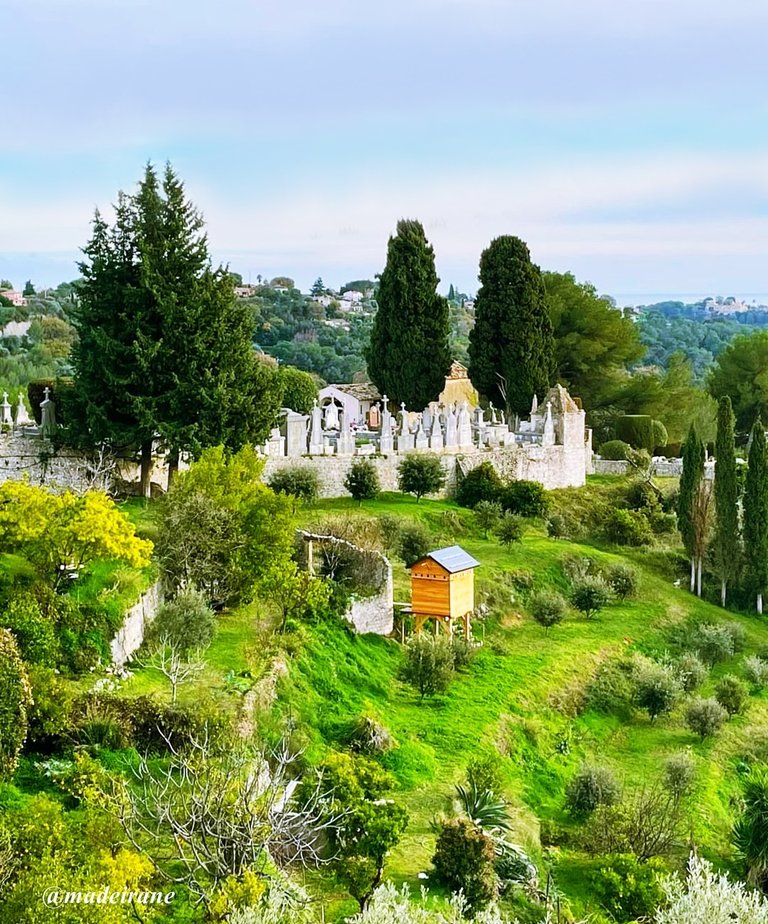
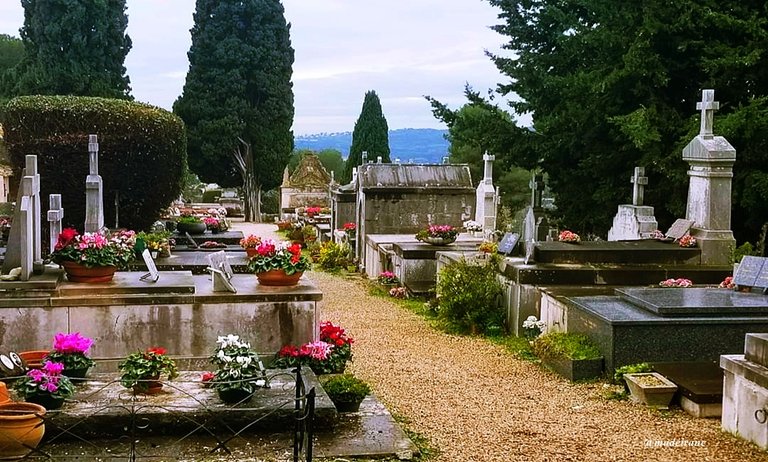
Tourists interested in painting should definitely check out the permanent and temporary exhibitions. The ticket price is from 3 Euros. All the shops, art salons, workshops and artisans in the village are open from 10-00 to 18-00.

We found out that local holidays and open festivals are held in the city, but it is better to check the time of their holding in advance. We didn’t get there... it’s a pity.
And you can’t just drag collectors away from souvenir shops: figurines, dolls, unusual watches and paintings, interior items, and just interesting decorative things. I bought a few too.
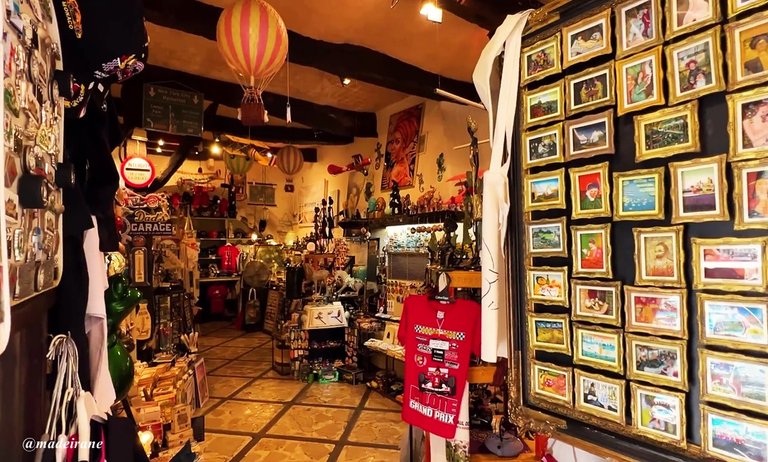
In the photo below you can see one of the famous attractions of Saint Paul de Vence - the Chapelle Sainte Claire, which was built in the 15th century and dedicated to Saint Clare, the patroness of this place. As always, I want to experience the magic of this magical village, which, by the way, is a huge open-air gallery.
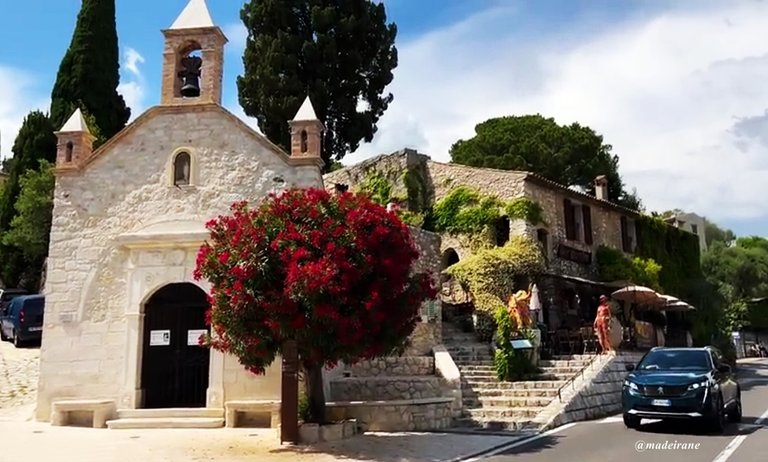
I like to look at traces of bygone times. Here, for example, is a small square with a fountain. Water was necessary for medieval buildings. Without water sources, no siege can be withstood, and in peacetime it is necessary to water visiting people and horses. Of course, this fountain is clearly not from the Middle Ages. It was created much later. Judging by the design, at the end of the 18th or even the beginning of the 19th century.

At some point, we crossed the entire city and went to the fortress wall. From there, magical views opened. An amazing fact, but in Saint Paul de Vence all these ancient buildings, including the city fortress wall, have been preserved almost in their original form.
All the details - signs or, for example, mailboxes - are simply works of art. These small details create the atmosphere with which the air is literally saturated.
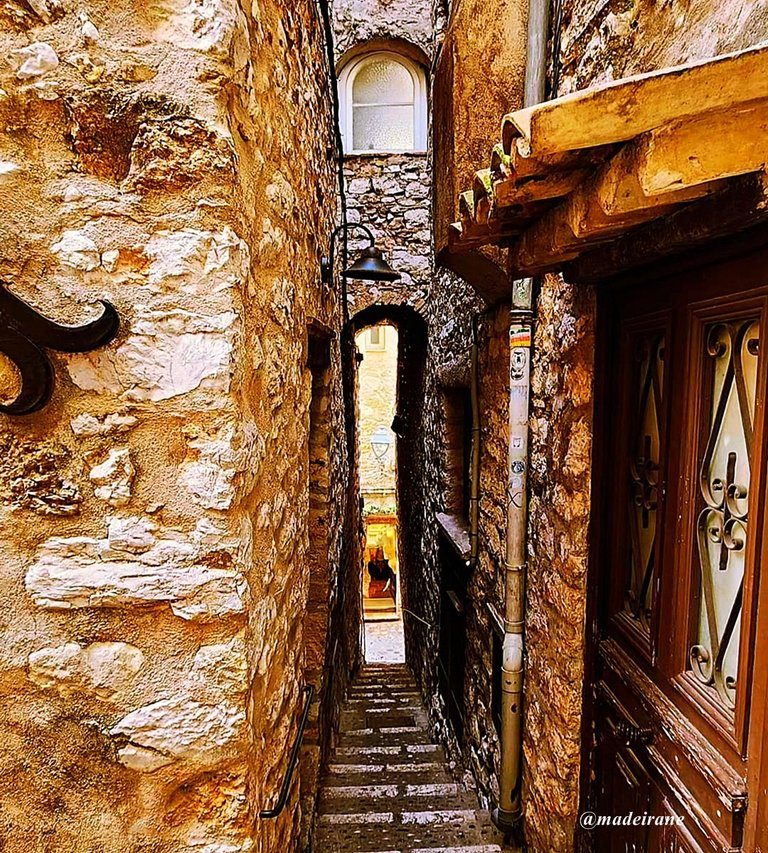
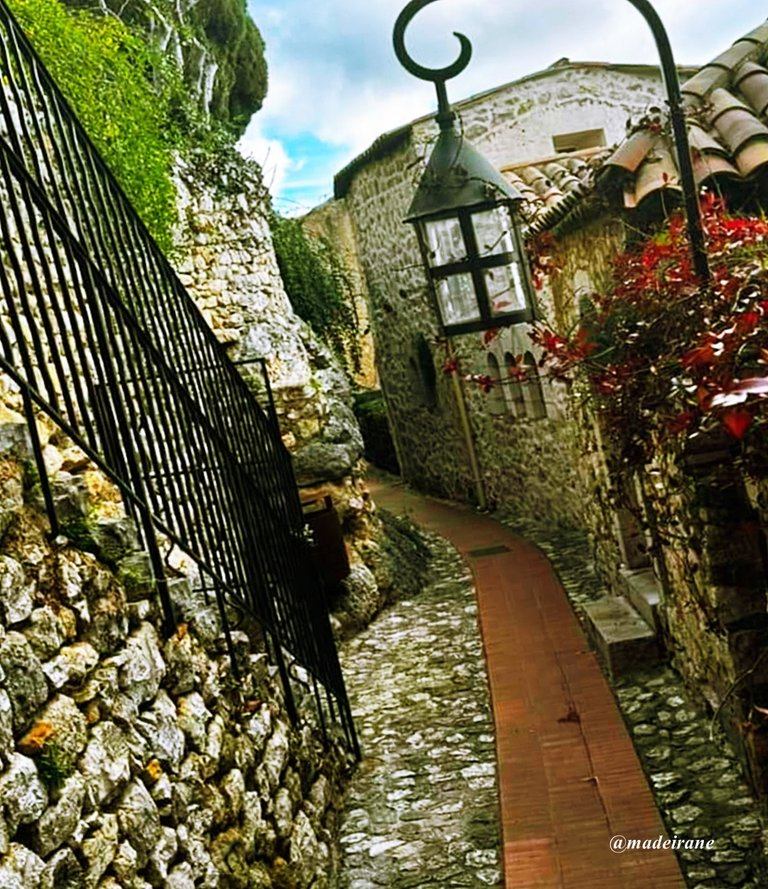
Meanwhile, we went to the chapel of the Brotherhood of White Penitents, built in the 17th century. It's surprisingly quite gloomy inside.
Walking back through the gates of the fortress wall, we paid attention to the road; it is not just paved with stones, it has a pattern of suns laid out on it. Once outside the gate, we decided to walk a little along the fortress wall. Inside the city, this part of it was closed off to us by houses; from outside, there is a magnificent view.
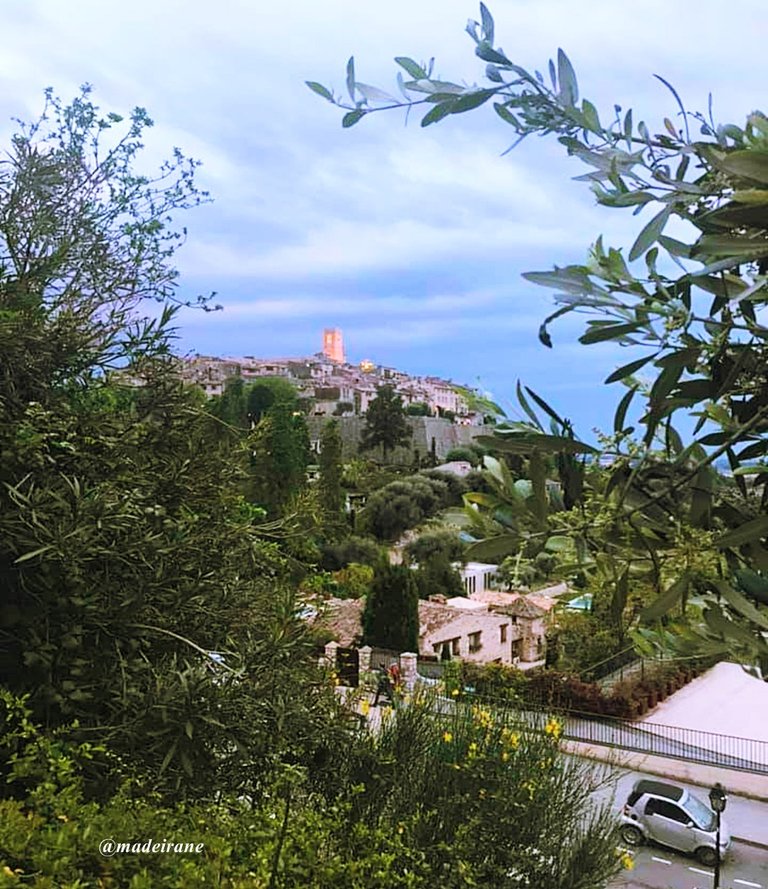
The flavor of Saint Paul de Vence is best felt when you wander through the ancient cobbled streets and look at the artists' studios and houses built in the 17th - 18th centuries. The blue sky and the bright sun of Provence complement the picture a lot, making unforgettable adjustments not only to the charm of this village, but also to the soul of each visitor.
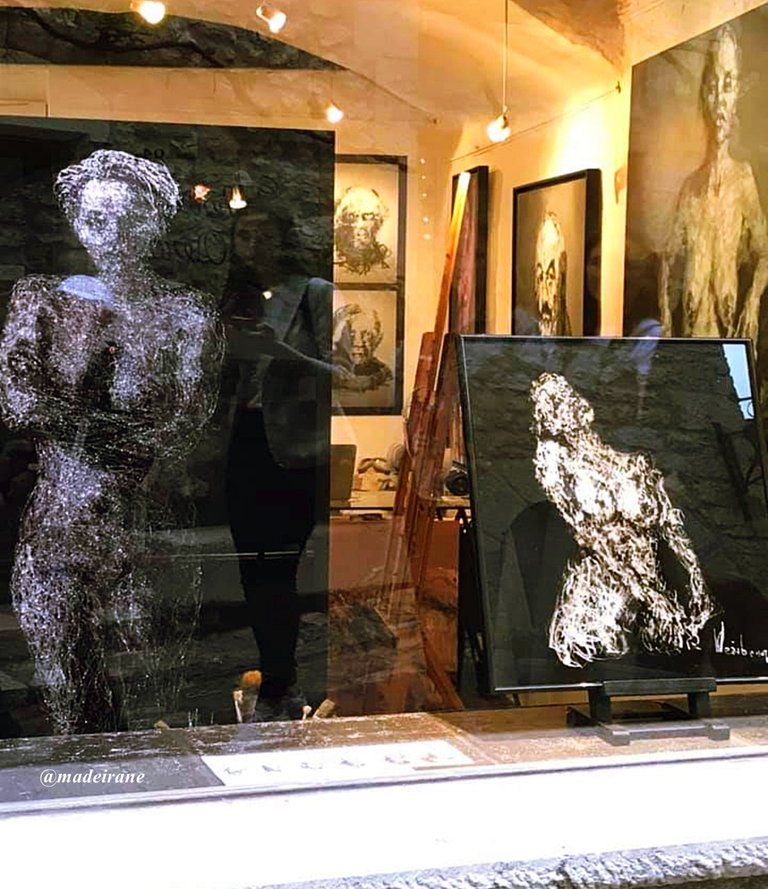
It’s very sad to leave this wonderful place that has completely captured my mind and soul, because I don’t want to. A little tired, but very happy, we wandered to the parking lot of cars.
France reveals itself with all its colors and warmth in small towns and cities like these. I truly was lucky to visit some of them, and I took with myself a lot of vivid memories.
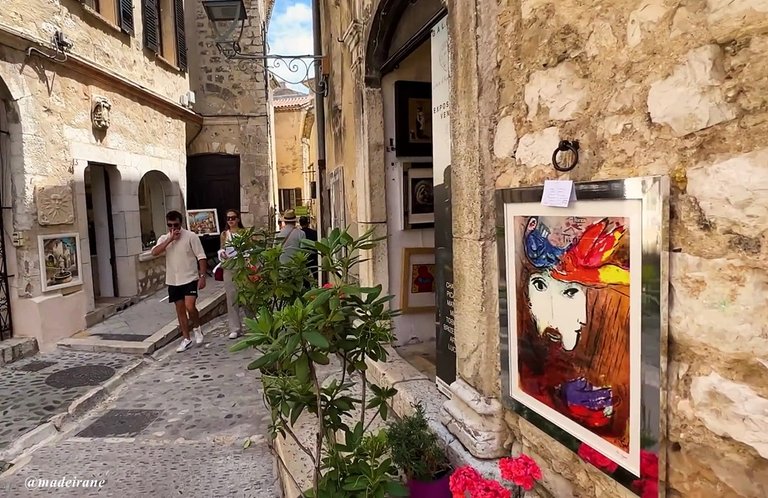
Holidays on the French Riviera are full of pleasant surprises for both romantics and connoisseurs of medieval history. You just need to know these places and be able to get to the tiny mountain towns and villages, and already on the spot, you can take a walk to your heart's content, inhaling the fabulously unique aromas of Provence and feel the spirit of medieval architecture, and not only. Saint Paul de Vence is unique in its own way.
💝💝💝💝💝💝💝💝💝💝
With love @madeirane
Photos are taken by me.
© 2024
Šiandien norėčiau papasakoti apie vieną autentišką, vaizdingą viduramžių vietovę Provanse, kuri garsėja tuo, kad XX a. pradžioje buvo kūrybingų bohemiečių - menininkų, rašytojų ir atlikėjų - įkvėpimo šaltinis. Mane traukia kūrybinės sielos skrydis, vaizdingos vietos ir nesibaigiančios atviros erdvės. Nenuostabu, kad būtent šio miestelio, kaimelio ar gyvenvietės vaizdai savo laiku paslaptingai traukė Paryžiaus menininkus Pikasą, Renuarą, Matisą, Šagalą ir daugelį kitų.
Daugelis miestelių įsikūrę aukštai kalnuose arba ant kalvų viršūnių, tačiau jei turite nuotykių dvasią ir naujų atradimų troškulį, kalnų takai jums ne kliūtis. Tokie esame mes, todėl drąsiai leidžiamės į kelionę...
Taigi šiek tiek atgaivinkime atmintį apie praėjusių dienų įvykius... Kaip žinome, Europa ne visada buvo krikščioniška, bet, nugalėjus pagonis, atėjo naujas puolimas - saracėnai, musulmonų klajokliai. Jie, atvykę iš Sirijos ar Arabijos dykumų, buvo plėšikai ir piktadariai... Viduržemio jūros pakrančių regionų gyventojai, gana pavargę nuo nuolatinių kruvinų antpuolių, tuo metu priėmė teisingą sprendimą. Žmonės ėmė keltis toli, toli, į kalnus. O ten, aukštai, aukštai kalnuose, maždaug VII a. jie atstatė įtvirtintus miestus, kurie gavo, mano nuomone, įdomų pavadinimą - "akmeniniai lizdai", iš esmės gera idėja. Taip buvo atgaivinta Pauliaus tvirtovė. Šalia senosios pilies ir to paties pavadinimo bažnyčios buvo pastatyti akmeniniai būstai.
XVI a. Sen Paul de Vence miestą, turėjusį didelę strateginę reikšmę, supo stora tvirtovės siena, kuri iki šiol puikiai išsilaikiusi ir įtraukta į Pasaulio paveldo sąrašą. 1860 m. Nica ir visi aplinkiniai miestai galutinai tapo Prancūzijos dalimi.
Kaip jau minėjau, tai romantiškų ir kūrybingų žmonių miestas. Būtent čia XX a. pradžioje ieškodami mūzos ir įkvėpimo atvyko talentingi jauni ir ne tik dailininkai, o vėliau rašytojai, poetai ir aktoriai.
Jie sukūrė mums miestą-muziejų po atviru dangumi, kuriame menininkų darbai užkariauja žmonių sielas ir priverčia širdis plakti greičiau. Visi žinote šiuos unikalius vardus: Pablo Picasso, Amedeo Mondigliani, Marko Šagalo, Raoulio Dufy, Pjero Bonnaro ir daugelio kitų. Būtent jie, pavargę nuo perpildyto Paryžiaus, ieškodami laisvės ir tikros realybės, naujų spalvų ir kontrastų derinių, atvyko į šį mažą miestelį ant kalvos, toli nuo sostinės šurmulio, atvyko ir kūrė, kūrė... Dažnai kaip užmokestį už nakvynę ir maistą jie palikdavo savo kūrinius - paveikslus. Taip Sen Paulio de Venso kaimelis-miestelis tapo meno ir kultūros centru.
O dabar tiesiog pasivaikščiosime senovinėmis pėsčiųjų gatvėmis Sen Paul de Vence, kurių yra labai nedaug, ne daugiau kaip penkios.
Visi miestelyje pastatyti namai yra lankytinos vietos, istorijos ir kultūros paminklai; jie priklauso XVI-XVIII amžiams. Dažniausiai juose įsikūrusios suvenyrų parduotuvės, salonai, galerijos ir kūrybinės dirbtuvės.
Akmeniniu keliu, kurie kaip niekas kitas saugo praeities istorinių įvykių atmintį, keliaujame į pačią miestelio "širdį". Mūsų kelyje - gerai išsilaikę viduramžių namai, kiemeliai ir nedidelės aikštės. Atrodo, kad laikas sustojo...
O čia atsiveria apylinkių ir Viduržemio jūros kraštovaizdžio vaizdai, kuriuos taip pamėgo meistrai ir kurie iki šiol įkvepia. Akmeninis miestas, apsuptas kalvų, alyvmedžių giraičių, žydinčios žalumos... Koks nesugadintas grožis! Kodėl aš nesu menininkas?
Iš apžvalgos aikštelės taip pat galima apžiūrėti vietos kapines. Jose palaidotas visame pasaulyje garsus dailininkas Marcas Šagalas, apdovanotas aukščiausiu Prancūzijos apdovanojimu - Garbės legiono ordinu. Jis kūrė vadovaudamasis principu "spalvos, tyrumas, meilė" ir paskutiniuosius savo gyvenimo metus praleido Sen Paule.
Tapyba besidomintys turistai būtinai turėtų apžiūrėti nuolatines ir laikinąsias parodas. Bilieto kaina - nuo 3 eurų. Visos kaimelio parduotuvės, meno salonai, dirbtuvės ir amatininkų dirbtuvės dirba nuo 10-00 iki 18-00 val.
Išsiaiškinome, kad mieste vyksta vietinės šventės ir atviri festivaliai, tačiau geriau iš anksto pasitikslinti jų rengimo laiką. Mes ten nepatekome... gaila.
O kolekcionierių nuo suvenyrų parduotuvių tiesiog neatitrauksi: figūrėlės, lėlės, neįprasti laikrodžiai ir paveikslai, interjero elementai ir tiesiog įdomūs dekoratyviniai daiktai. Keletą jų nusipirkau ir aš.
Žemiau esančioje nuotraukoje matote vieną iš garsiųjų Sen Paul de Vence lankytinų objektų - XV a. pastatytą Šventosios Klaros koplyčią (Chapelle Sainte Claire), dedikuotą šventajai Klarai, šios vietos globėjai. Kaip visada norisi patirti šio stebuklingo kaimelio, kuris, beje, yra didžiulė galerija po atviru dangumi, magiją.
Man patinka žiūrėti į praėjusių laikų pėdsakus. Pavyzdžiui, čia yra nedidelė aikštė su fontanu. Vanduo buvo būtinas viduramžių pastatams. Be vandens šaltinių negalima atlaikyti jokios apgulties, o taikos metu būtina pagirdyti atvykusius žmones ir arklius. Žinoma, šis fontanas aiškiai ne iš viduramžių. Jis buvo sukurtas daug vėliau. Sprendžiant iš dizaino, XVIII a. pabaigoje ar net XIX a. pradžioje.
Kažkuriuo metu perėjome visą miestą ir nuėjome prie tvirtovės sienos. Nuo ten atsivėrė stebuklingi vaizdai. Nuostabus faktas, bet Sen Pol de Venso mieste visi šie senoviniai pastatai, įskaitant ir miesto tvirtovės sieną, išliko beveik pirminės formos.
Visos detalės - iškabos ar, pavyzdžiui, pašto dėžutės - yra tiesiog meno kūriniai. Šios smulkios detalės sukuria atmosferą, kuria oras tiesiog persmelktas.
Tuo tarpu mes nuvykome į XVII a. pastatytą Baltųjų atgailautojų brolijos koplyčią. Jos vidus stebėtinai niūrus.
Grįždami pro tvirtovės sienos vartus atkreipėme dėmesį į kelią; jis ne tik grįstas akmenimis, bet ir išklotas saulutės raštu. Išėję už vartų, nusprendėme šiek tiek pasivaikščioti palei tvirtovės sieną. Miesto viduje ši dalis mums buvo uždaryta namais; iš išorės atsiveria nuostabus vaizdas.
Sen Pol de Venso skonį geriausiai pajusite vaikštinėdami senovinėmis grįstomis gatvelėmis ir apžiūrinėdami XVII-XVIII a. pastatytas menininkų dirbtuves ir namus. Mėlynas dangus ir ryški Provanso saulė labai papildo vaizdą, nepamirštamai pakoreguodami ne tik šio kaimelio žavesį, bet ir kiekvieno lankytojo sielą.
Labai liūdna palikti šią nuostabią vietą, visiškai užvaldžiusią mano protą ir sielą, nes to nenoriu. Šiek tiek pavargę, bet labai laimingi, nuklydome į automobilių stovėjimo aikštelę.
Prancūzija atsiskleidžia visomis savo spalvomis ir šiluma tokiuose mažuose miesteliuose ir miestuose kaip šie. Man tikrai pasisekė aplankyti kai kuriuos iš jų ir išsivežiau su savimi daug ryškių prisiminimų.
Atostogos Prancūzijos Rivjeroje - tai malonios staigmenos tiek romantikams, tiek viduramžių istorijos žinovams. Tereikia pažinti šias vietas ir sugebėti patekti į mažyčius kalnų miestelius ir kaimelius, ir jau vietoje galėsite iki soties pasivaikščioti, įkvėpti pasakiškai unikalių Provanso aromatų ir pajusti viduramžių architektūros dvasią, ir ne tik. Sen Paul de Vence yra savaip unikalus.
Translated from Lithuanian with DeepL.com (free version).
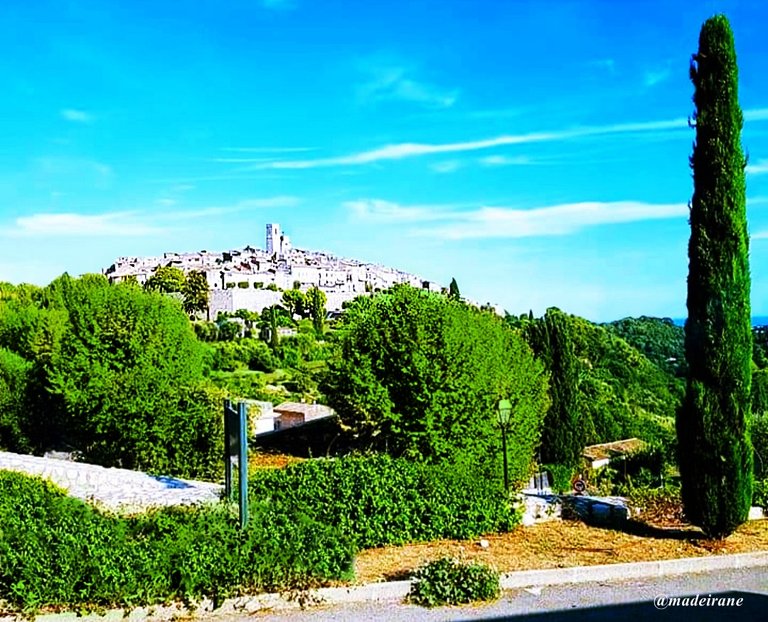
Congratulations @madeirane! You have completed the following achievement on the Hive blockchain And have been rewarded with New badge(s)
Your next target is to reach 90 posts.
You can view your badges on your board and compare yourself to others in the Ranking
If you no longer want to receive notifications, reply to this comment with the word
STOPTo support your work, I also upvoted your post!
Check out our last posts:
Congratulations @madeirane! Your post made the TravelFeed team happy so we have sent you our big smile. Keep up the good job. 😃
Thanks for using TravelFeed!
@for91days (TravelFeed team)
PS: Have you joined our Discord yet? This is where over 1000 members of the TravelFeed come together to chat. Join us!